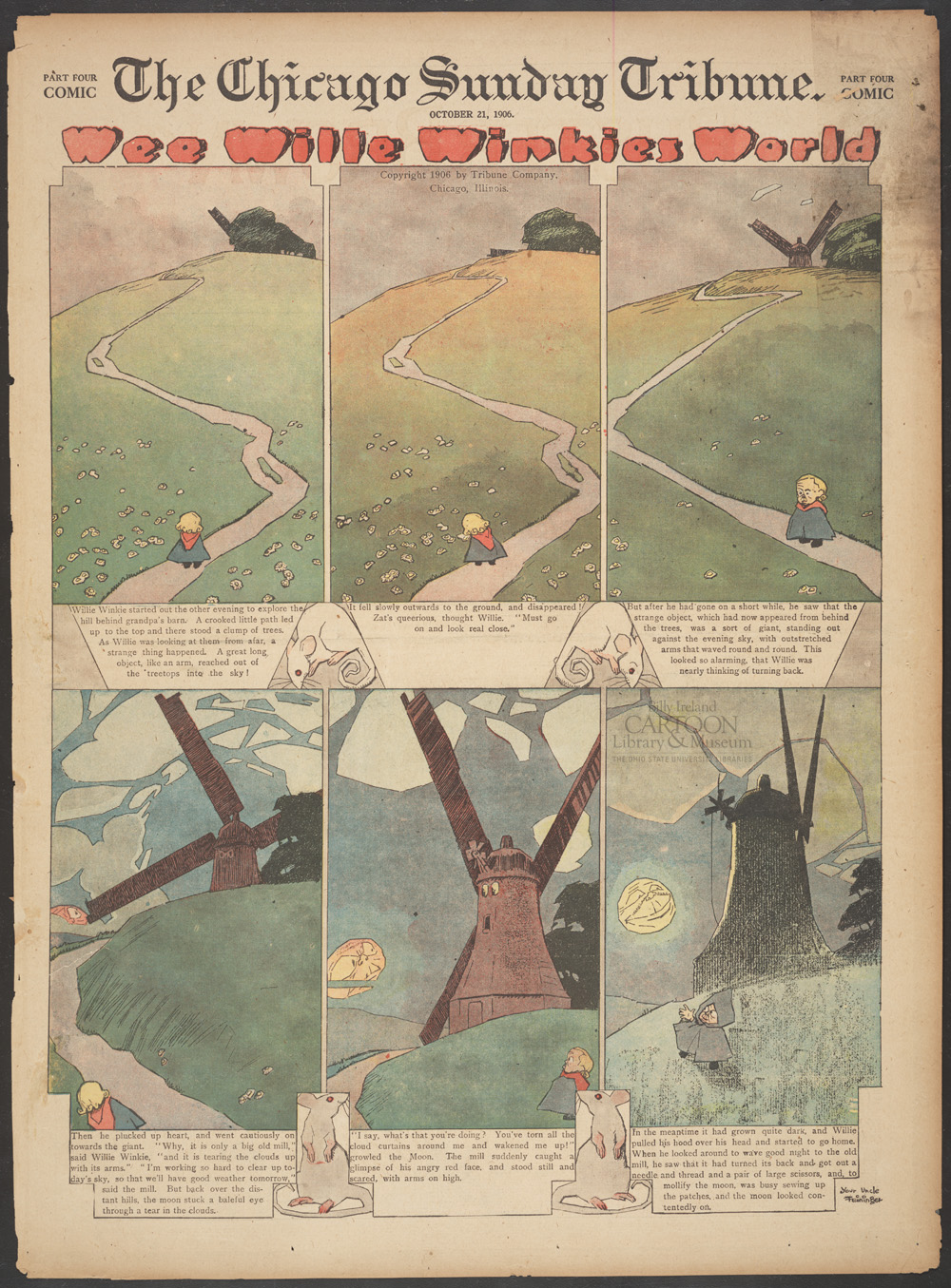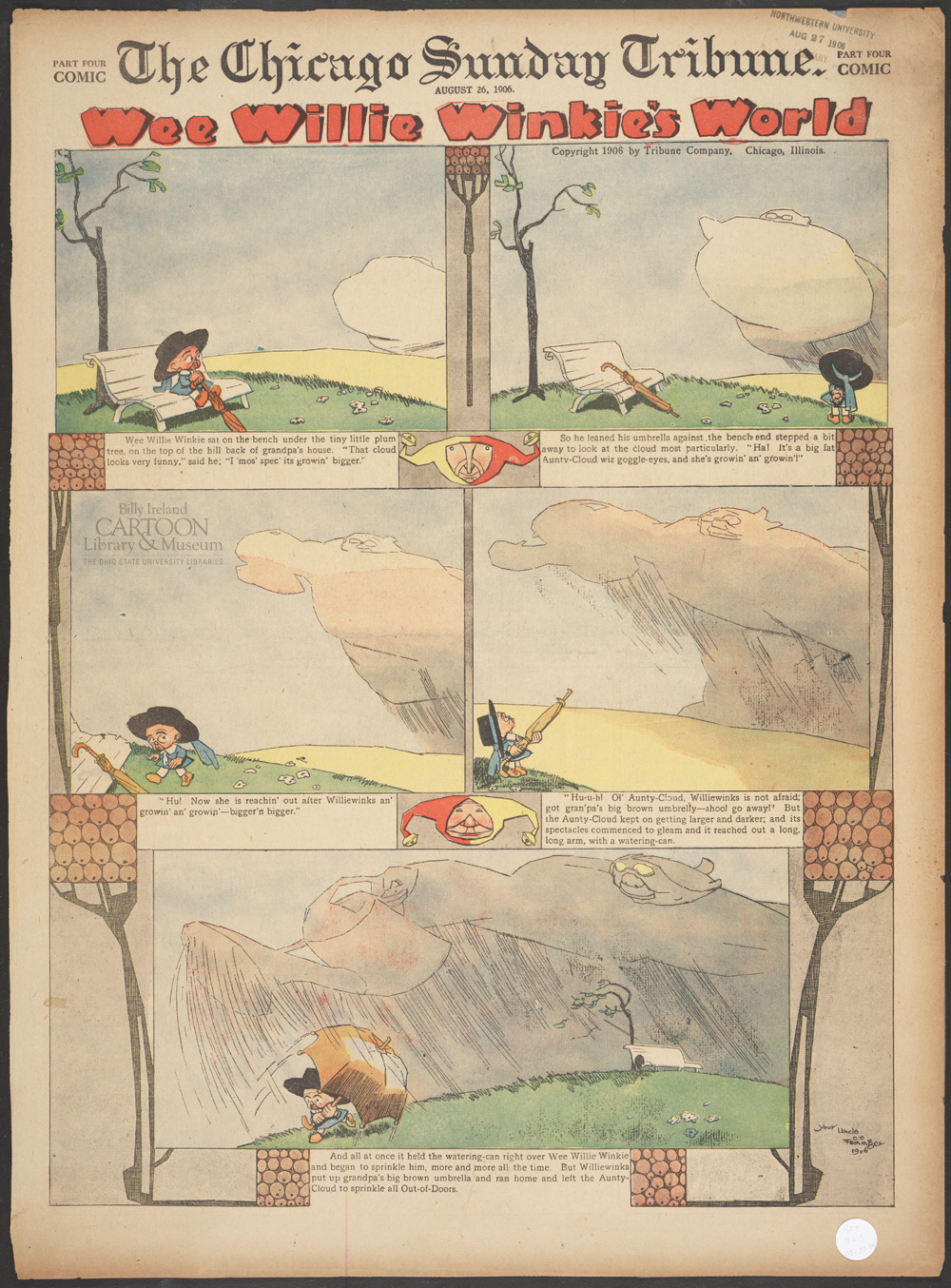Named after the Scottish nursery rhyme by William Miller, the world in which Lyonel Feininger’s Wee Willie Winkie exists is an astute and awe-inducing illumination of a child’s imagination, following in the vein of McCay’s Little Nemo in Slumberland but in a style filtered through odd, kaleidoscopic angles. Each installment finds Willie roaming through the landscape of the countryside and seaside, interpreting and relating to his world by anthropomorphizing just about everything in it. From tree-trunks that look like elephants, to obtuse faces found in the contours of a rock, Willie’s world is sweet and alive. Below, the sun putting himself to bed by pulling the evening clouds in like a blanket, is a perfect representation of Feininger’s brilliance, and one of our personal favorites.

Lyonel Feininger’s “Wee Willie Winkie’s World”. From the San Francisco Academy of Comic Art Collection, The Ohio State University Billy Ireland Cartoon Library & Museum (click to enlarge)
Although the strip lasted less than one year back in 1906, Feininger’s exploration of the layout and ornamental design of the newspaper comics page in Wee Willie Winkie’s World was groundbreaking. The imaginary element of his observations is further accentuated by the lack of speech bubbles in the comics, so as we read it we’re more deeply submerged in participating in an abstracted version of a child’s reality.

Lyonel Feininger’s “Wee Willie Winkie’s World”. From the San Francisco Academy of Comic Art Collection, The Ohio State University Billy Ireland Cartoon Library & Museum (click to enlarge)
Feininger, who is far more well known as an expressionist painter and a founder of the famous Bauhaus school, was born and raised in NYC but spent the majority of his influential years in Germany. In the 1930s, his work was deemed to be “degenerate art” by the Third Reich, and as the situation worsened he returned with his family to New York not long after.

Lyonel Feininger’s “Wee Willie Winkie’s World”. From the San Francisco Academy of Comic Art Collection, The Ohio State University Billy Ireland Cartoon Library & Museum (click to enlarge)
His career as a cartoonist was short-lived, and better remembered through his other strip The Kin-der-Kids, which also ran just under a year during about the same time as Wee Willie Winkie’s World for the Chicago Tribune. His reasons for stopping are lost to history, but rumored to be the result of a struggle with his editors.

Lyonel Feininger’s “Wee Willie Winkie’s World”. From the San Francisco Academy of Comic Art Collection, The Ohio State University Billy Ireland Cartoon Library & Museum (click to enlarge)
To see more of Lyonel Feininger’s work, we hope you’ll check out our Lyonel Feininger Digital Album where you can learn more about his life and view a collection of his digitized tearsheets.



Recent Comments